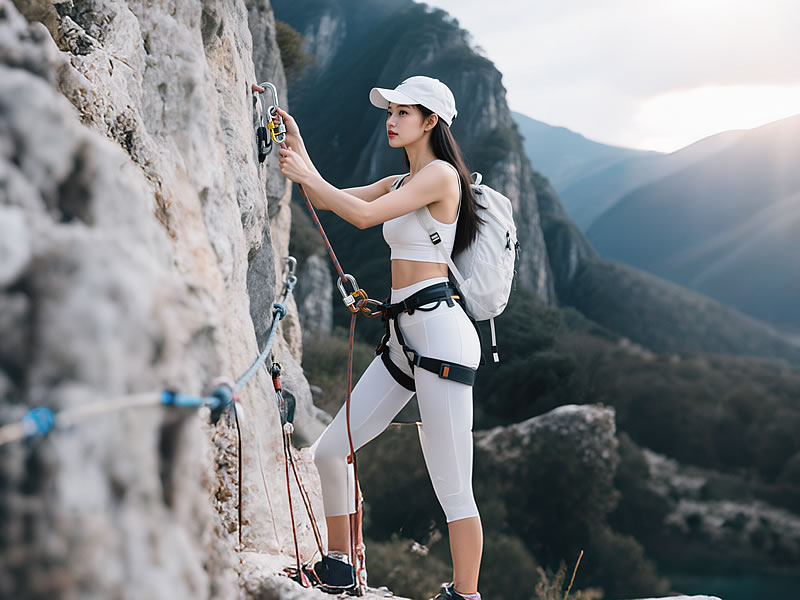How to properly lock a carabiner clip for rock climbing?
Locking a carabiner correctly isn’t just a step—it’s a life-saving habit. A single unsecured gate can lead to catastrophic failure in a fall. Whether you’re belaying, building anchors, or clipping gear, here’s your definitive guide to locking carabiners safely and effectively.

1. Types of Locking Mechanisms
Carabiners come with different locking systems, each requiring specific techniques:
- Screwgate: Manual sleeve twisting (common in trad climbing).
- Auto-Lock (e.g., Petzl Ball-Lock): Spring-loaded gates that self-close but require a deliberate motion to open.
- Triple-Action (e.g., Black Diamond GridLock): Three-step opening process to prevent accidental release.
2. Step-by-Step Locking Guide
For Screwgate Carabiners
- Close the Gate: Ensure the gate fully closes against the carabiner body.
- Twist the Sleeve: Rotate the locking sleeve clockwise until no threads are visible.
- Tug Test: Pull sharply on the sleeve to confirm it doesn’t rotate.
For Auto-Locking Carabiners
- Engage the Gate: Push the gate closed until you hear a click.
- Visual Check: Verify the locking lever/button is fully seated (no gaps).
- Pressure Test: Apply sideways force to ensure the gate stays shut.
For Triple-Action Carabiners
- Close the Gate: Press until it latches.
- Locking Sequence: Follow the brand-specific steps (e.g., twist, push, or slide).
- Double-Check: Confirm all locking components are engaged.
3. Critical Mistakes to Avoid
- Incomplete Screwgate Closure: A partially twisted sleeve can vibrate open during a fall.
- False “Click” Confidence: Auto-locks may seem closed but aren’t fully secured.
- Cross-Loading: Loading the carabiner sideways weakens strength by 50%+.
- Mixing Lock Types: Using screwgates with auto-locks in the same system increases human error risk.
4. Pro Tips for Reliability
- Color Coding: Use brightly colored carabiners for critical points (e.g., red for anchors).
- Backup Knots: Add a stopper knot to ropes clipped to non-locking carabiners.
- Gloves Check: Practice locking/unlocking with gloves to ensure smooth operation.
5. Maintenance and Inspection
- Monthly Checks: Look for cracks, gate misalignment, or rust.
- Clean After Use: Remove dirt with a soft brush; avoid lubricants (they attract grime).
- Retire Damaged Gear: Even minor gate wobble compromises safety.
6. Top Locking Carabiners for 2024
- Petzl William Screwgate (38 kN): Ideal for anchors with its steel construction.
- Black Diamond GridLock (27 kN): Triple-action security in a lightweight aluminum body.
- DMM Sentinel (24 kN): Compact auto-lock with a keylock nose to prevent snagging.
Final Safety Reminder
A properly locked carabiner is your last line of defense. Always use UIAA/EN-certified carabiners, follow manufacturer guidelines, and never rush the locking process. Practice these steps on the ground until they become muscle memory—your life depends on it.






